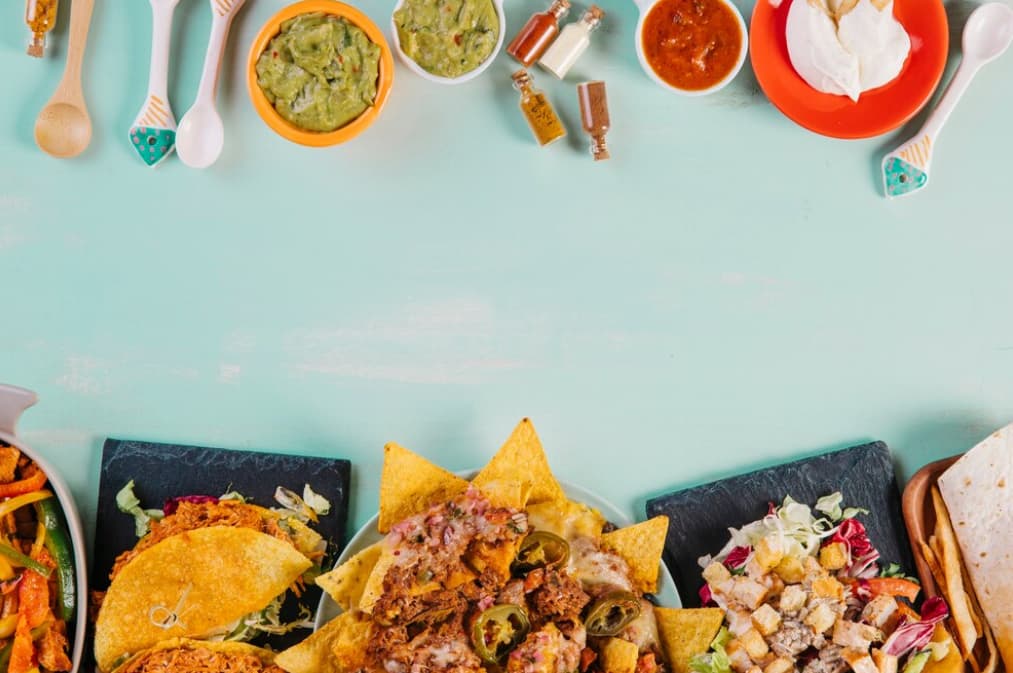Given America’s melting-pot reputation, it’s no surprise that the nation sports numerous ethnic cuisines. With the advent of easier travel a few decades ago and a generation eager to sample new flavors (Hello, Millenials!), a surge in international dishes has swept through major US cities. The diversity in food mirrors the diversity in culture, and as demand has grown, a wave of new eateries specializing in different cuisines has sprung up throughout the country, marking a shift in the gastronomic landscape.
While discussing America’s top favorite ethnic cuisines, it’s essential to explore the role of herbs like fresh vs dried sage in enhancing the flavors of these diverse culinary traditions.
Ethnic Food Trends in America
Ever savored a Korean delicacy? Korean food is one of the ethnic cuisines gradually gaining popularity in America. Recent surveys suggest that nearly 80% of Americans sample international dishes at least once a month, with 35% indulging weekly. Not surprisingly, the younger demographic pushes this trend forward, particularly those aged 18-34.
Other emerging favorites include Moroccan, Southeast Asian, Cuban, Vietnamese, and Peruvian cuisines. Social influence plays a significant part, with friends often prompting others to try new dishes. An increase in travel availability for younger people has also stirred a desire to recreate flavors experienced during trips once back home. Moreover, the rise of food-based television shows has led to increased exposure and interest in international culinary experiences.
Top 10 Ethnic Cuisines Enjoyed in the USA

- Chinese Cuisine: Widely recognized and enjoyed globally, Chinese food holds a special place in culinary preferences, particularly in the United States. Its popularity extends beyond dining out, as it’s a top choice for home delivery orders worldwide;
- Mexican Cuisine: Given the significant Mexican-American population in the United States, it’s no surprise that Mexican cuisine ranks highly. Its flavors and dishes have earned a prominent place in the American food landscape.
- Italian Cuisine: Italian dishes enjoy universal acclaim, with Italian restaurants found in nearly every corner of the world. A substantial majority of Americans, over 70%, express their fondness for Italian food, underlining its global appeal;
- Japanese Cuisine: Japanese food, particularly sushi, has experienced a surge in popularity over recent years. This trend has led to a proliferation of Japanese restaurants globally, catering to the growing appetite for dishes like sushi, especially among those who savor raw fish;
- Greek Cuisine: Greek immigrants have had a long-standing presence in North America, leading to a strong Greek influence in the restaurant scene. Greek restaurants have become a mainstay in dining out, reflecting the community’s established culinary heritage;
- French Cuisine: While it may not dominate the American culinary scene, French cuisine is often a top choice in many other countries. Known for its refined dishes, about a quarter of Americans report enjoying French food regularly;
- Thai Cuisine: Distinct from other Asian cuisines, such as Chinese, Thai food offers a unique blend of spices and vegetables. While only 24% of Americans say they regularly consume Thai cuisine, its distinct flavors set it apart in the Asian culinary spectrum;
- Spanish Cuisine: Spanish and Mexican cuisines are notably different, with Spain boasting some of the world’s finest restaurants. Despite this, Spanish cuisine is less common in the United States, with dishes like paella being among its most famous exports;
- Indian Cuisine: Indian food is a staple in the UK, often surprising Britons to find it less dominant in the American food scene. Despite its popularity in the UK, Indian cuisine is still growing in its influence in the United States;
- Mediterranean Cuisine: Often associated with healthy eating in America, Mediterranean cuisine emphasizes fresh ingredients, vegetables, fruits, and a preference for fish over meat. Currently, only 16% of Americans report regularly including Mediterranean dishes in their diet.
The Influence of Travel and Media on Food Preference

The growth of ethnic food popularity mirrors the surge in both travel and food-based media. Travelers can experience an array of foods during their trips, stirring a desire to recreate these taste experiences back home. Similarly, the media’s increasing focus on food and cooking shows introduces viewers to new cuisines, sparking curiosity and driving them to explore these tastes firsthand.
Initially, the trend of ethnic foods began in large urban areas, particularly East and West Coast cities like Los Angeles and New York, with a rich history of ethnic diversity. Now, the trend is catching on across the USA, with ethnic restaurants and food trucks popping even in rural counties.
The rising popularity of ethnic foods has brought about a shift in eating habits, empowering a more health-conscious society. Many ethnic cuisines, like Mediterranean, are known for their use of fresh ingredients and less emphasis on processed foods. This offers an alternative to typical American fast food, facilitating a healthier lifestyle.
Conclusion
America’s culinary canvas is as diverse as its citizens, each stroke colored by the flavors, spices, and techniques of various ethnic cuisines. While traditional American staples remain popular, the rising trend of savoring international foods reveals an evolving, adventurous American palate. This journey into the realm of global cuisines is not just a testament to the country’s cultural diversity, but a nod to the transformative power of food, which connects us with different cultures, provokes thought, and pushes culinary boundaries.
